RISING STORM - THE IMPERIAL JAPANESE NAVY AND
CHINA
1931-1941
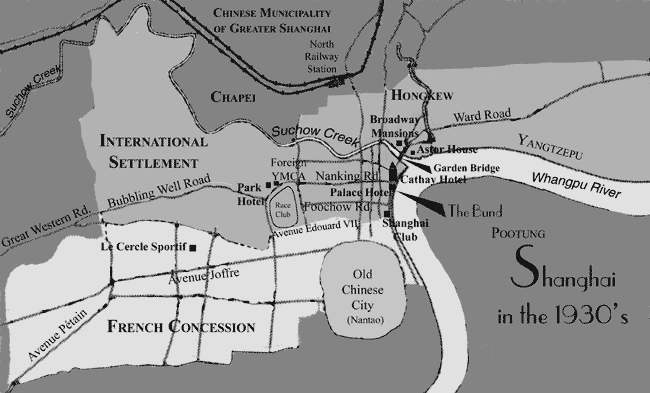 Shanghai in 1930s
Shanghai in 1930s
The Seizure of Shanghai’s International Settlement -
1941
© 2012 Bob Hackett and Sander Kingsepp
Trade between China and Europe begins with silks, porcelain and tea. Demand for
tea becomes so strong that the British begin to ship opium from their colonies
in India to China to offset the financial trade deficits caused by the
importation of tea. The Qing Dynasty (1644-1911) attempts to stop the spread of
opium by seizing opium supplies from British traders. This leads to the First
Opium War fought between 1839 to 1842 in which Britain prevails.
In 1842, at the end of the First Opium War, under the Treaty of Nanking,
China opens five treaty ports to Britain (Shanghai, Ningpo [Ningbo], Foochow
[Fuzhou], Amoy [Xiamen] and Canton [Guangzhou]) and cedes Hong Kong Island to
Britain among other things. A British settlement is established at Shanghai,
followed soon thereafter by American and French settlements. The American
settlement is to the north of the British settlement and the French settlement
was to the south. In 1849, after the Chinese cede additional territory to
France, a "French Concession" is established.
In 1863, the Shanghai International Settlement is established after the
British and American settlements are formally united. Ulike the British Crown
Colony of Hong Kong, the Shanghai International Settlement remains sovereign
Chinese territory. In both 1900 and 1914, the borders of the French Concession
are expanded. In the 1920s, it is developed into the premier residential area of
Shanghai. In 1918, after the Russian Revolution, Shanghai’s population swells by
the immigration of many White Russians fleeing the Communist Red Russians. After
the Japanese occupy Manchuria, further immigration to Shanghai follows. At the
start of the Second Sino-Japanese War, the Chinese population in the French
Concession is about 500,000.
28 January 1932:
Japanese forces violate the neutrality of the
Shanghai International Settlement by launching attacks on Chinese forces from
within their sectors. The Municipal Council requests assistance from the treaty
powers and activates the Shanghai Volunteer Corps of approximately 3,000 men.
 Shanghai Volunteer Corps White Russians in
1932
Shanghai Volunteer Corps White Russians in
1932
4 February 1932:
1,100 men of the United States Army's 31st Infantry
Regiment begin to arrive from the Philippines to reinforce the 1,625 men of the
United States 4th Marines. A British Brigade of 3,600 man their settlement and
1,500 French forces man their concession.
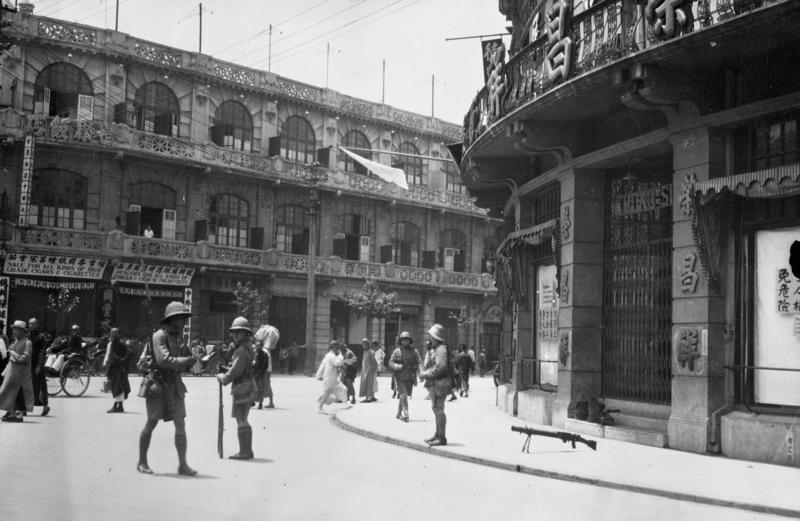 British troops in the International Settlement in
1932
British troops in the International Settlement in
1932
9 August 1940:
The British Government announces it is withdrawing all
her China Station forces at Shanghai, Peking and Tientsin by the end of the
month to bolster the Home and Mediterranean Fleets. The nervous International
Settlement take special comfort in the 4th United States Marines after
Shanghai's British garrison leaves.
May 1941:
The Japanese gain control of the International Settlement's
governing council.
7 November 1941:
President Franklin D. Roosevelt orders all American river
gunboats and the 1,200 men of the 4th Marines to leave China for to the
Philippines, except those Marines assigned to protect diplomatic posts. The
order says war between Japan and the United States is very close.
18 November 1941:
In response to deteriorating political conditions in
China, Admiral (later Senator/CT) Thomas C. Hart, CinC, U. S. Asiatic Fleet
orders Rear Admiral (later Vice Admiral) William A. Glassford, CO, Yangtze River
Patrol (ComYangPat), to return to Manila with five of his larger gunboats.
26 November 1941:
Gunboat USS LUZON (PR-7) departs Hangkow with Rear
Admiral Glassford embarked.
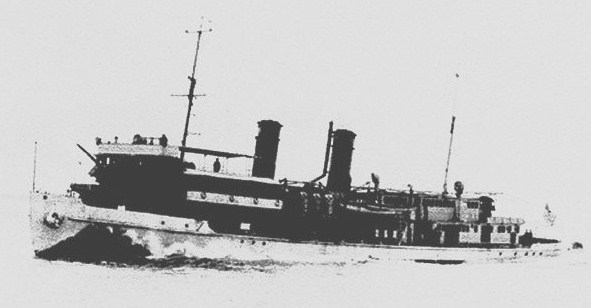 USS LUZON (later IJN KARATSU)
USS LUZON (later IJN KARATSU)
27-28 November 1941:
The 1,200 men of the 4th United States Marines
are evacuated from Shanghai aboard SS PRESIDENT MADISON and SS PRESIDENT
HARRISON, but six men fail to board and are left behind. [1]
29 November 1941:
At 0027, LUZON, carrying Admiral Glassford, and USS
OAHU (PR-6) depart Shanghai for Manila.
30 November 1941:
LUZON and OAHU rendezvous with minelayer USS FINCH
(AM-9) and submarine rescue vessel PIGEON (ASR-6) . They remain in company until
3 December.
1 December 1941:
Formosa Straits. FINCH, PIGEON, LUZON and OAHU
encounter a large Japanese convoy headed southward. An IJN floatplane circles
the Americans, followed by seven Japanese warships of various types.
2 December 1941:
Formosa Straits. Glassford's flat-bottomed river
boats encounter a typhoon. In Manila, Admiral Hart, concerned for the gunboats'
safety, directs FINCH and PIGEON to tow them or, if necessary, take off their
crews.
3 December 1941:
Mountainous seas damage PIGEON's rudder and she loses
an anchor. FINCH loses both of her anchors, but manages to take unnavigable
PIGEON under tow.
4 December 1941:
Only two USN vessels remain in Chinese waters, both
not seaworthy enough undertake a crossing of the Formosa Straits in foul
weather. USS WAKE (ex-GUAM)(PR-3) is at Shanghai to maintain communications
until a radio station is established at the Consulate General and USS TUTUILA
(PR-4) is at Chungking to furnish essential services to the U. S. Embassy.
5-10 December 1941:
LUZON and OAHU reach Manila followed by FINCH and
PIGEON. After 22 years of operations, Glassford is forced to dissolve
ComYangPat. All the other American gunboats arrive over the next few days.
8 December 1941:
Shanghai. Whuangpu River. WAKE is rigged to be to
scuttled with demolition charges. About 0400, some two hours after the Pearl
Harbor attack, WAKE is boarded and seized by Japanese Special Naval Landing
Force (SNLF) troops. Surprised and overwhelmed, WAKE's crew is taken as
prisoners of war before they can scuttle the ship. WAKE is the only USN warship
to surrender in WW II.
About the same time, Captain Otani Inaho (51) and a detachment of SNLF
troops arrive and board moored British river gunboat HMS PETEREL. Otani informs her CO, Royal Navy Volunteer Reserve Lt Stephen Polkinghorn, that their countries are at war and demands surrender of the ship. Polkinghorn refuses and orders the Japanese off at gunpoint.
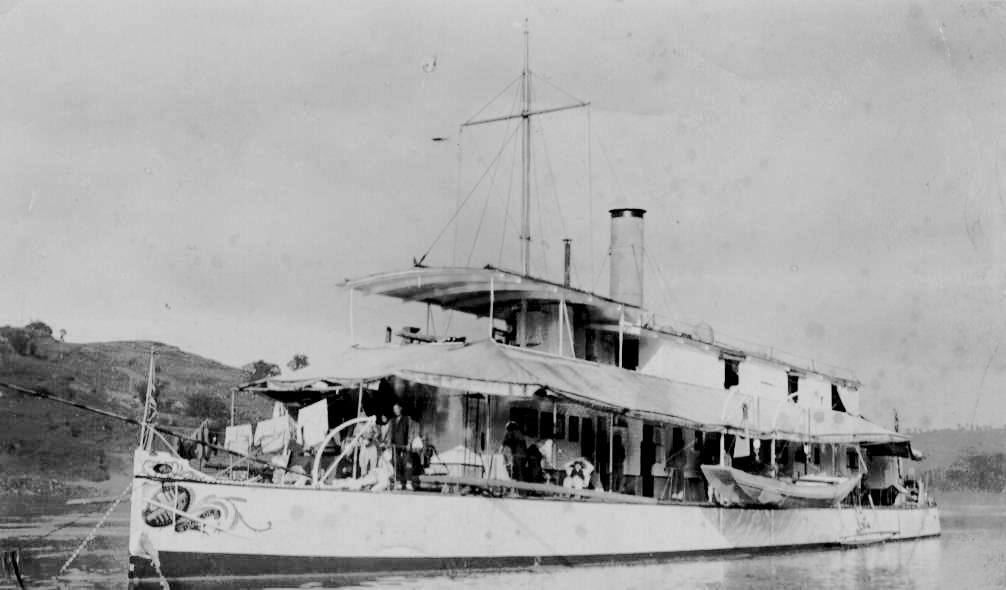
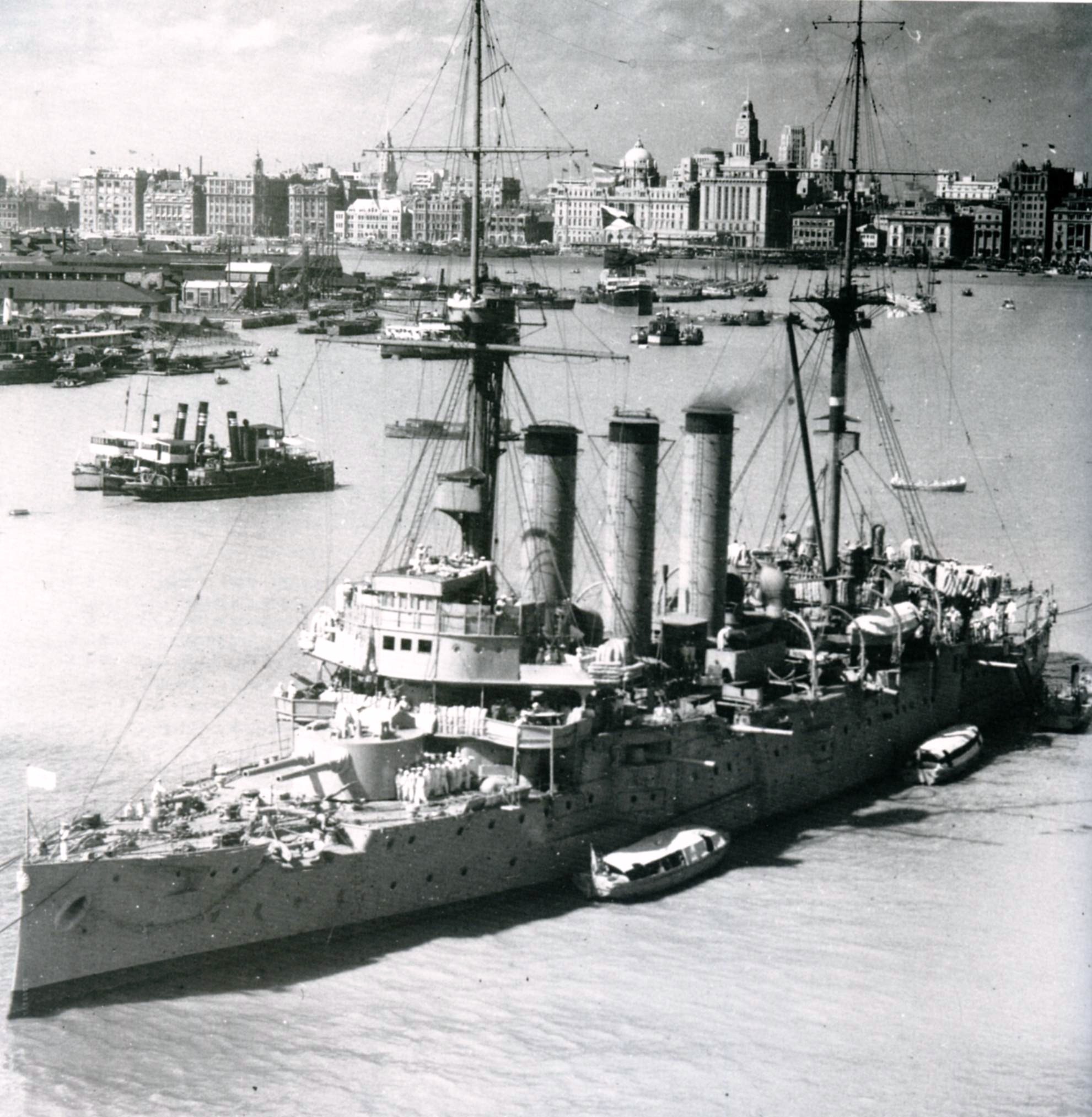 Left: HMS PETEREL, Right: IJN IZUMO
Left: HMS PETEREL, Right: IJN IZUMO
Illuminated by light cruiser IJN IZUMO’s searchlights, gunboats IJN SETA and ATAMI, a destroyer and artillery pieces ashore sink PETEREL by gunfire. Six of PETEREL’s crew of 21 men are lost, but Polkinghorn, although wounded, and the other crewmen survive and are made POWs.
Immediately following the attack on Pearl Harbor, Japanese troops storm
the International Settlement. The French and Americans surrender the Settlement without firing a shot and the residents are interned in POW camps.
Authors' Notes:
[1] SS PRESIDENT HARRISON arrived safely at Olongapo, Philippines on 3 Dec '41, only to be dispatched to Chingwangtao (near Peking) to pick up about 300 Marines of the Peking and Tientsin Legation Guards. On 8 Dec '41, after the war began, HARRISON was pursued in the East China Sea by Japanese ships and planes. Her captain ran her aground at 16 knots on Shaweishan Island, off Shanghai, to deny her use to the Japanese. Nevertheless, the Japanese refloated and repaired PRESIDENT HARRISON and renamed her KAKKO MARU, later KACHIDOKI MARU. On 12 Sep '44 while carrying 950 British/Australian POWs, KACHIDOKI MARU was torpedoed by USS PAMPANITO (SS-383) taking down 431 POWs.
-Bob Hackett and Sander Kingsepp
Back to Rising Storm
Page










